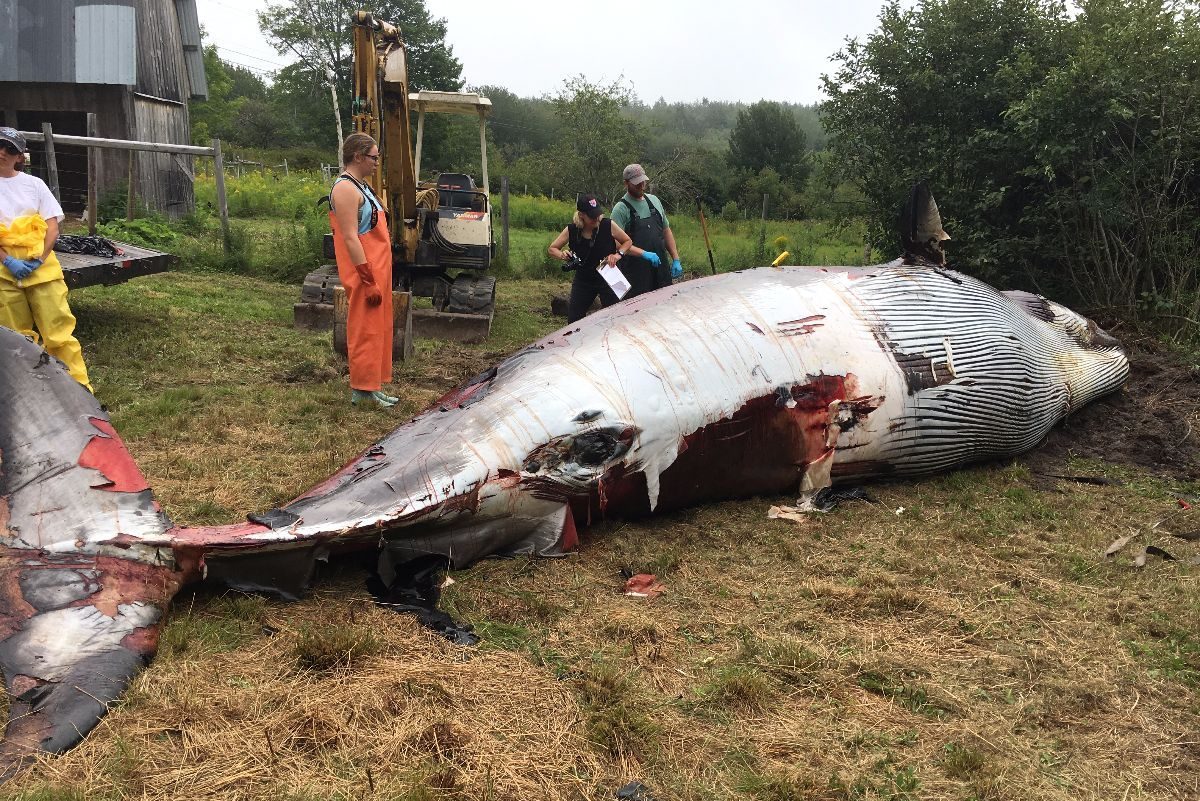
"We got a picture of the dorsal fins for both and went to the office yesterday and confirmed it wasn't the same," said Emma Ober of Allied Whale.
The whale was brought to the home of Dan DenDanto, a research associate for Allied Whale, for a necropsy. The COA research vessel Osprey towed the carcass to the Seal Cove docks Monday, where it was transferred to a trailer for transport to DenDanto's yard.
Volunteers made precise incisions in order to search for the cause of the animal's death. Oil flowed out of the minke whale's blubber like olive oil being poured into a sink. "The oil coming out is due to the internal pressure, and when cuts are made, it relieves the pressure, and that's why the oil flows out like that," DenDanto said.
The Maine Department of Maine Resources was alerted that the adult female was dead and floating in the mouth of Blue Hill Bay Sunday. "The whale was found with 30 feet of line in its mouth," said Rosemary Seton of Allied Whale.
DenDanto said, "The Maine Marine Patrol hooked it to a navigation buoy. If it was outside the bay, they wouldn't have gotten the call. They did something because it would be a hazard to navigation.
"The response was categorized as a Code 2 or 3, which means that an animal is bloated and decomposition has begun."
Temperature is a major factor in the decomposition of a dead whale. "The land was 20 degrees warmer, so decomposition was accelerated after it was brought to shore," said DenDanto. In addition to the temperature, the mammal floated on top of the water in part due to the gases inside. "It doesn't take a lot of decomposition gases to make it into a buoyant animal, and the pressure expels gas, which starts at the stomach."
The North Atlantic minke whale population is estimated at 515,000, and the whale is protected under the Marine Protection Act.
"We see them in May or June, and they are quite abundant through October," DenDanto said. "The minkes are found in all oceans of the world. The whales had an advantage during whaling a century ago because the population was not targeted so it could expand and get to the food resources that were available. As a result, it doesn't get a lot of conservation attention."
The minke is the second smallest of the baleen whales, the ones that don't have teeth. Instead of mechanical digestion, they use filter feeding that sifts through the water while trapping prey in bristles, a skin derivative. "On the belly side of the whale, there are white, serrated stripes that expand and allow it to feed," DenDanto said.
The minkes are found closer to shore than other species of baleen whales because of their feeding habits. "They are fish eaters and chase the fish through the bays," Dendanto said. "They are after the big school of fish, so they are vulnerable to in-shore lobster gear. It is not uncommon to have them in fishing waters."
"We have been seeing a fair amount [of minkes], especially closer in to Frenchman's Bay," Ober said. "I work on the whale watch, and we've seen them out on the water in the last couple of weeks."



Reader Comments